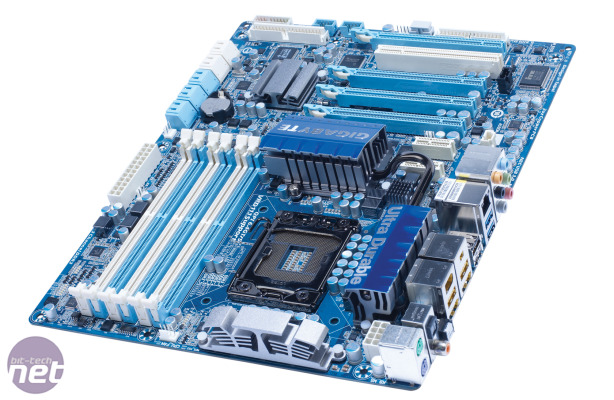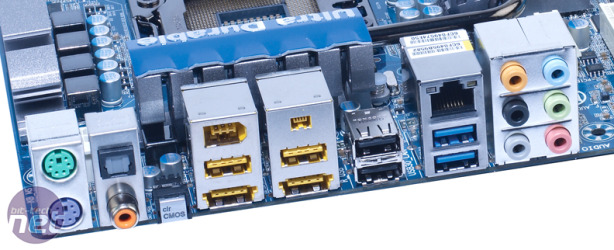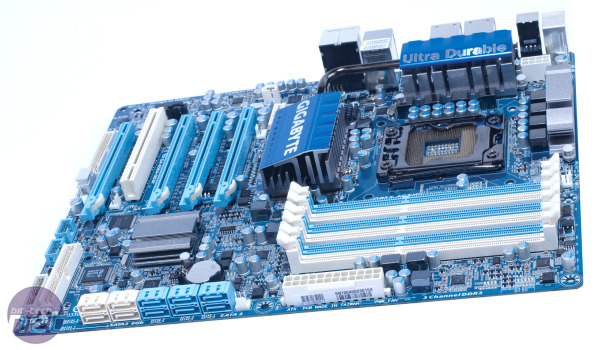Gigabyte GA-X58A-UD3R Motherboard Review
Manufacturer: GigabyteUK Price (as Reviewed): £156.47 (inc. VAT)
US Price (as Reviewed): $199.99 (ex. Tax)
Gigabyte was a little slow out of the starting blocks back when the X58 chipset first launched, taking a few weeks longer than its competitors to produce its first LGA1366 motherboard. This hasn’t stopped the Taiwanese giant releasing no fewer than ten different LGA1366 motherboards over the past 18 months, however.
The GA-X58A-UD3R is the latest addition to the range, and bears an uncanny resemblance to the GA-X58A-UD7, which we reviewed earlier this month.
In fact, unless you spend a lot of time with both boards, it’s hard to spot any significant differences. The biggest difference, in fact, is not in the features but in the power circuitry. While this board has a traditional chemical capacitor VRM circuit, the GA-X58A-UD7 has a more advanced 24-phase VRM design with solid-state capacitors. In theory, the latter should run cooler, and be more efficient and reliable. However, we found both motherboards to be equally excellent overclockers in our tests.
A common factor with both boards is the number and type of expansion card slots. This means that the UD3R has four 16x PCI-E slots, two 1x PCI-E and one PCI slot. Gigabyte claims that the first two slots support up to 16 lanes each, while the last two have eight lanes each. We aren’t entirely convinced by this claim, as there are no additional PCI-E controllers on the UD3R and the X58 chipset has only 36 lanes, not 48. Either way, Gigabyte has obtained SLI, 3-way SLI and CrossFire certification for this board.
In addition to the usual six DDR3 DIMM sockets you’d expect to find on an LGA1366 motherboard, it has an entire army of SATA ports. These are provided by four different controllers.
The Intel ICH10R Southbridge, Gigabyte SATA2 and JMicron JMB362 controllers power eight RAID-capable SATA 3Gbps ports and two RAID-capable eSATA ports between them, while a Marvell 9128 controller provides two RAID-capable SATA 6Gbps ports.
This is quite frankly a silly number of SATA ports for anything other than a file server to have, and it caused a major problem during our tests – the Windows 7 installer froze with the hard disk and optical drive hooked up to the Southbridge-powered SATA ports.
The only way we could solve this curious problem was to install Windows 7 with the drives connected to the Gigabyte SATA2 controller, after which we returned them to the Southbridge-powered ports.
Despite the hassle of having to do this, however, the two SATA 6Gbps ports will be very useful in the future, as hard disks and SSDs supporting this new standard should appear very soon. Gigabyte has also gone to town on USB ports – in addition to the ten USB 2 ports, there are two USB 3 ports.
Despite a plethora of extra controllers, the UD3R has a good PCB layout. Both power sockets are located towards the edge of the board, for example, while all ten SATA ports are mounted parallel with the PCB for neat cabling.
Unlike the ridiculous cooling mounted on the UD7, the UD3R’s cooling is far more demure, with sensibly sized heatsinks on top of the Southbridge, chipset and VRMs. The latter two are linked by a single heatpipe. The only obvious omissions are power and reset switches, although the headers for these are clearly labelled and colour coded.

MSI MPG Velox 100R Chassis Review
October 14 2021 | 15:04












Want to comment? Please log in.